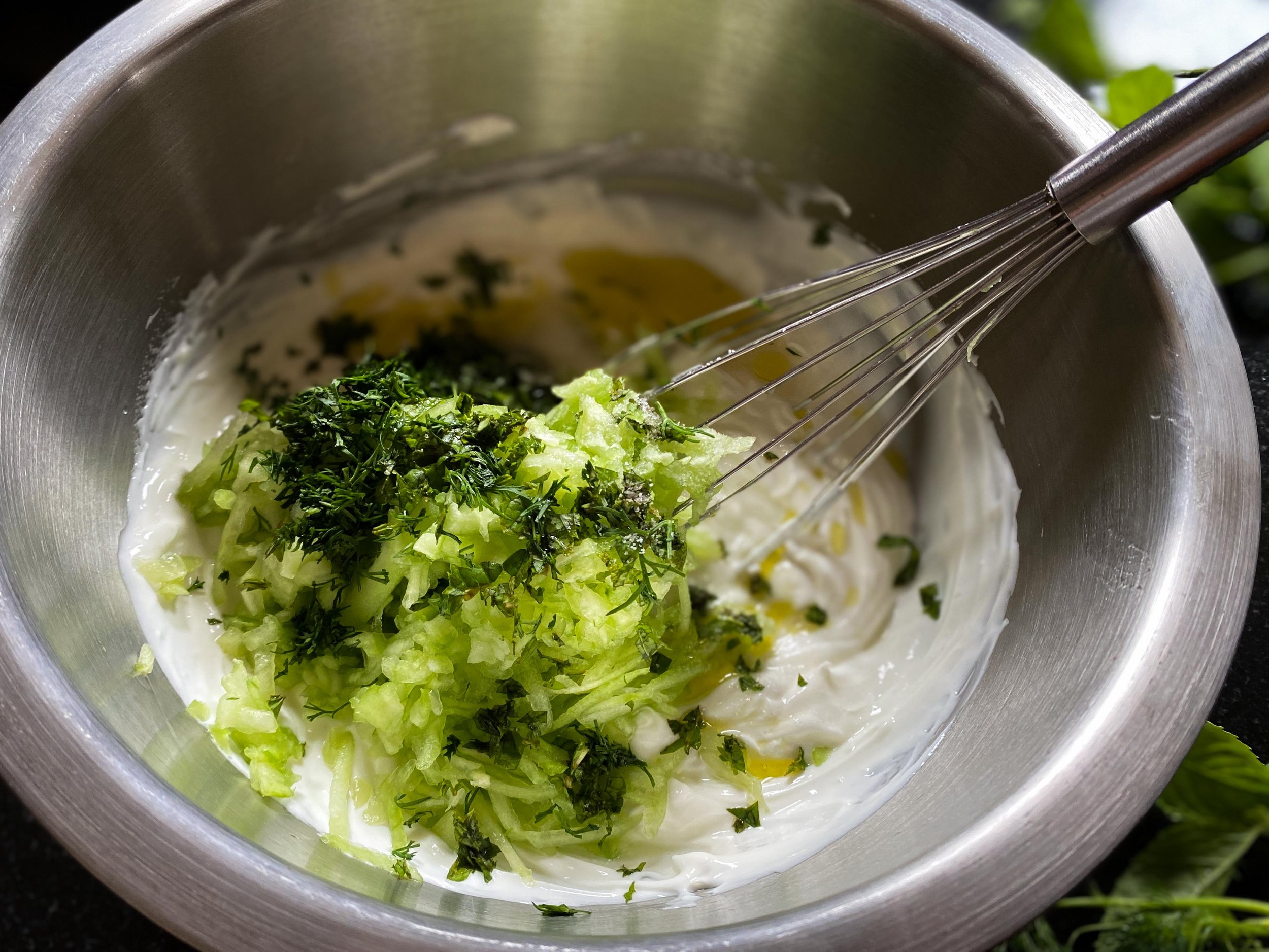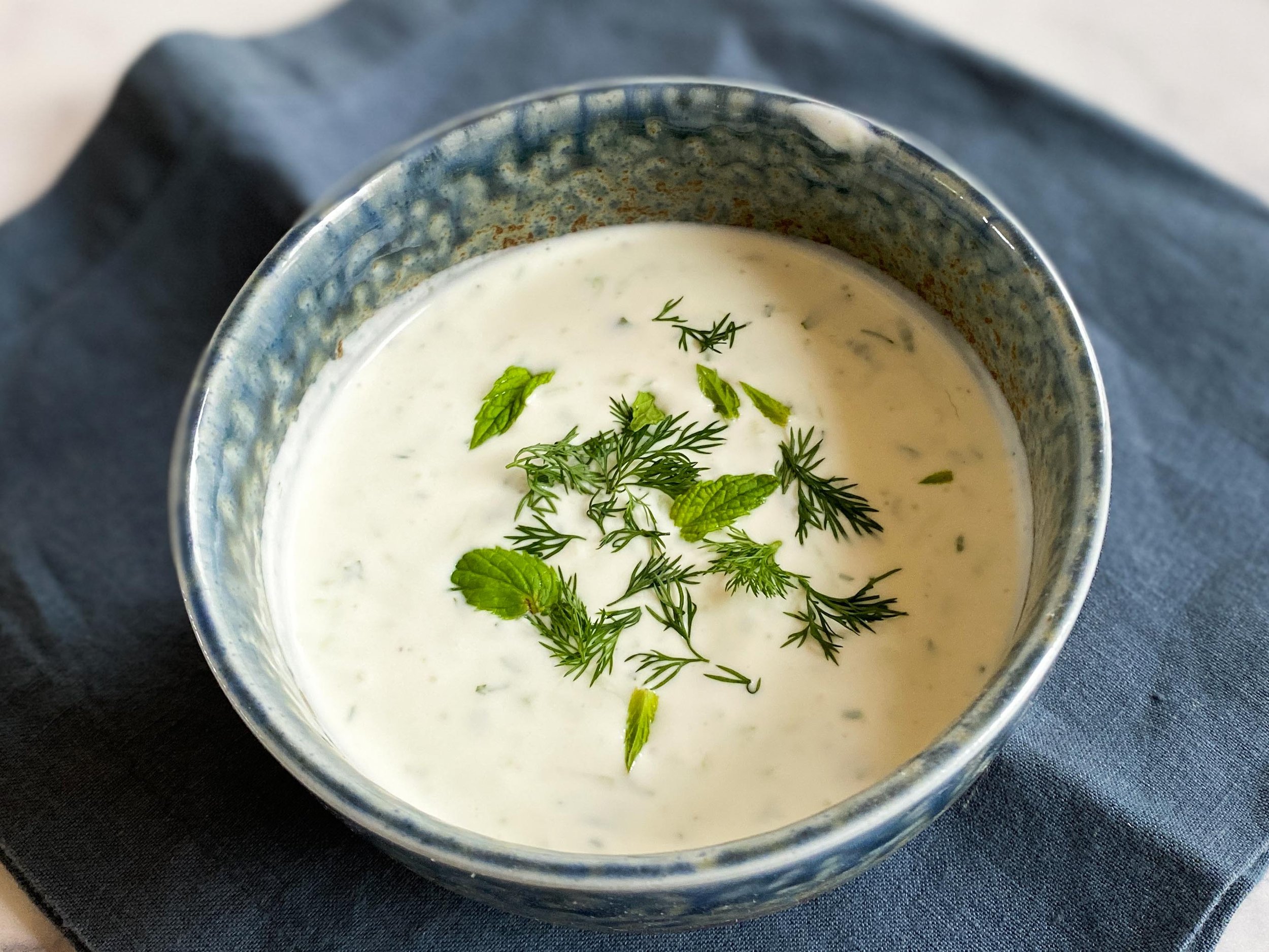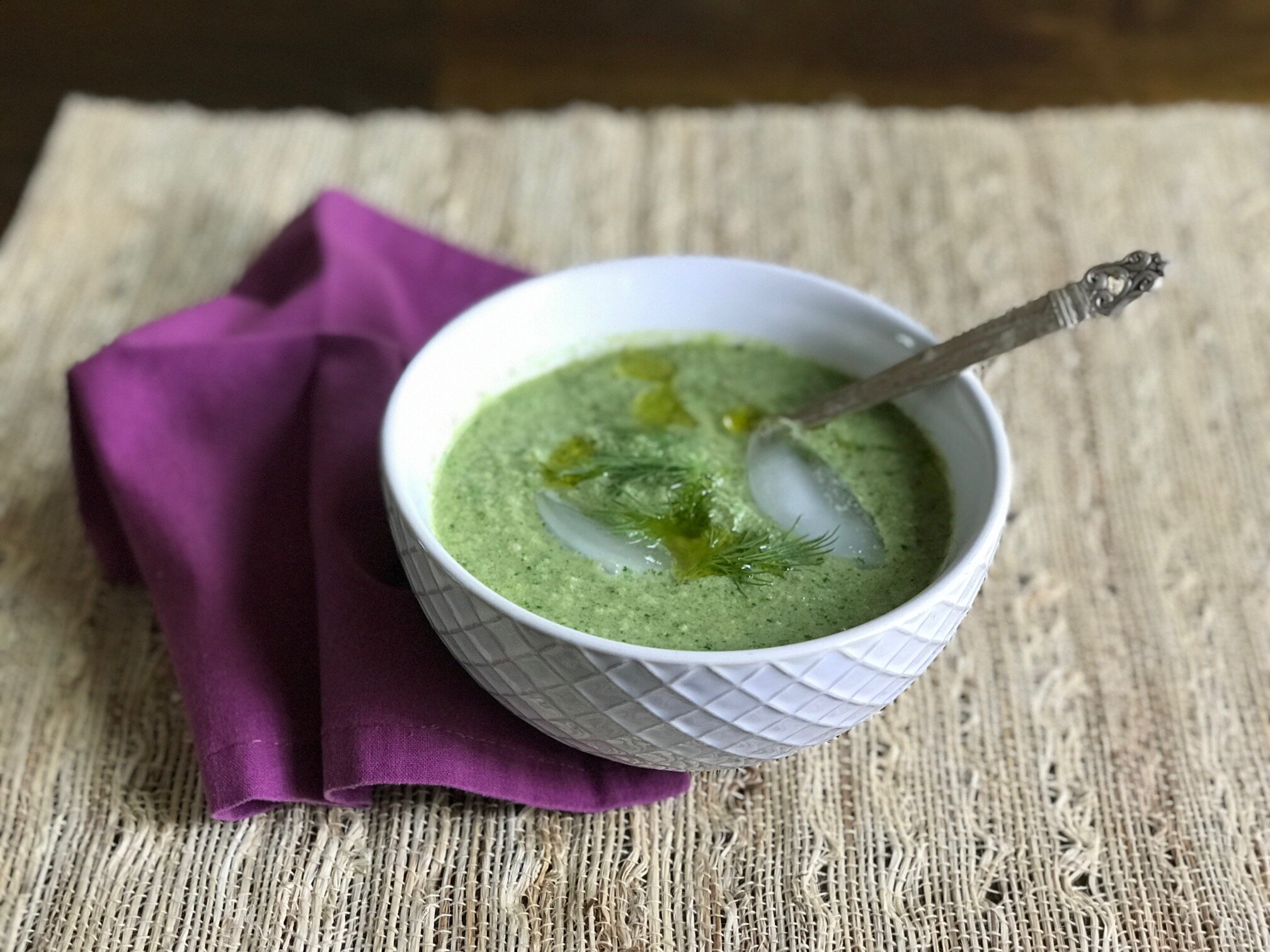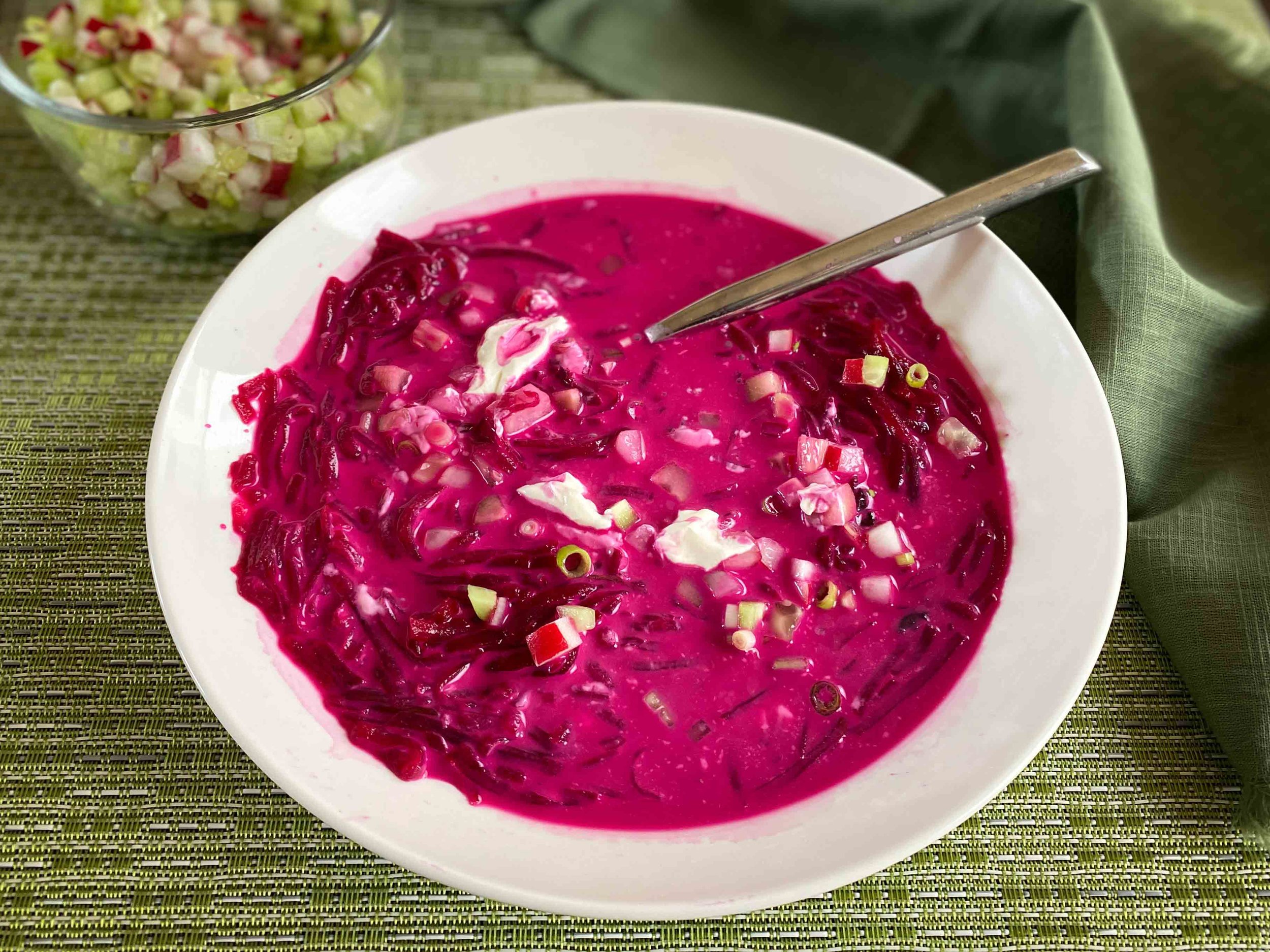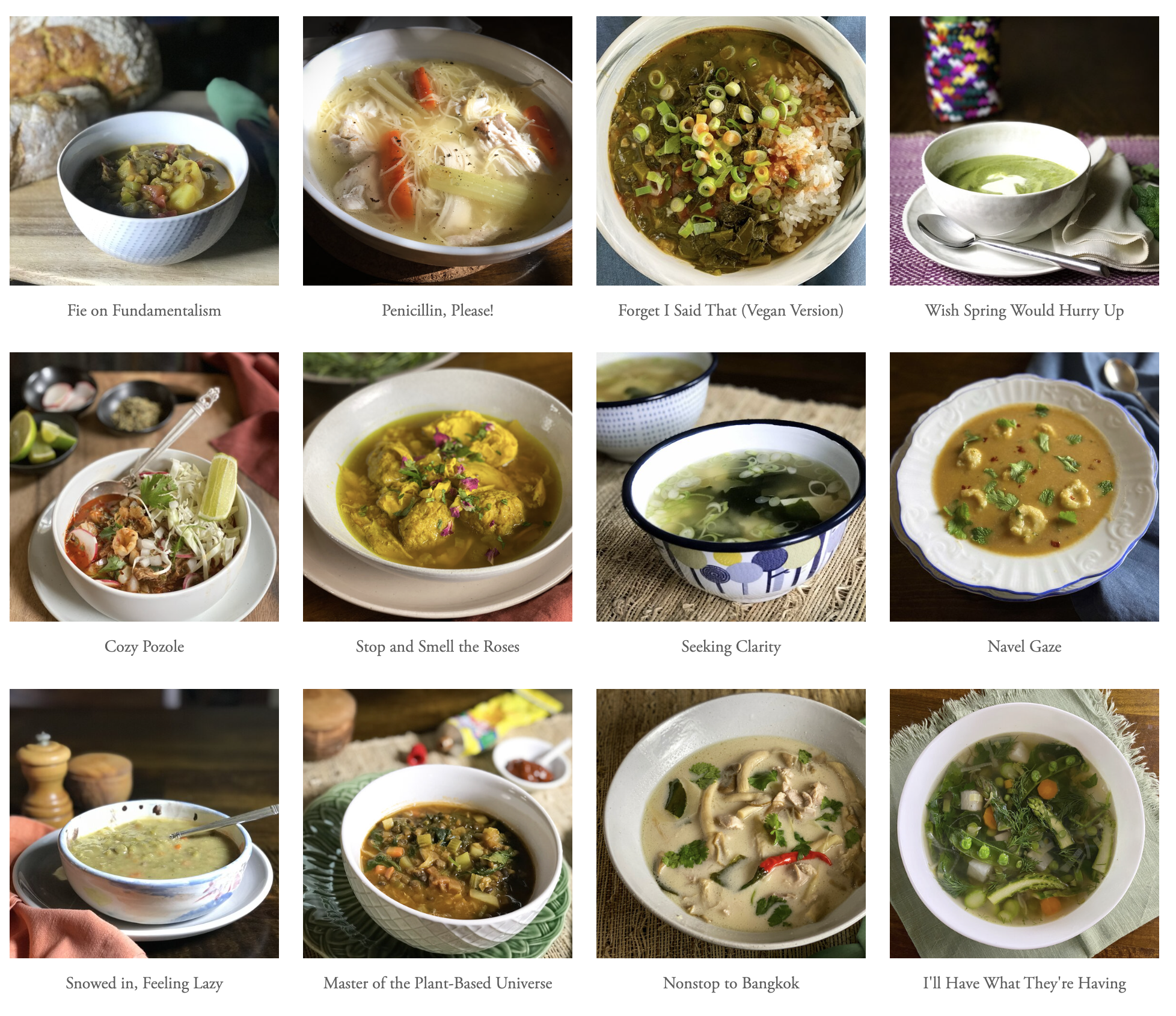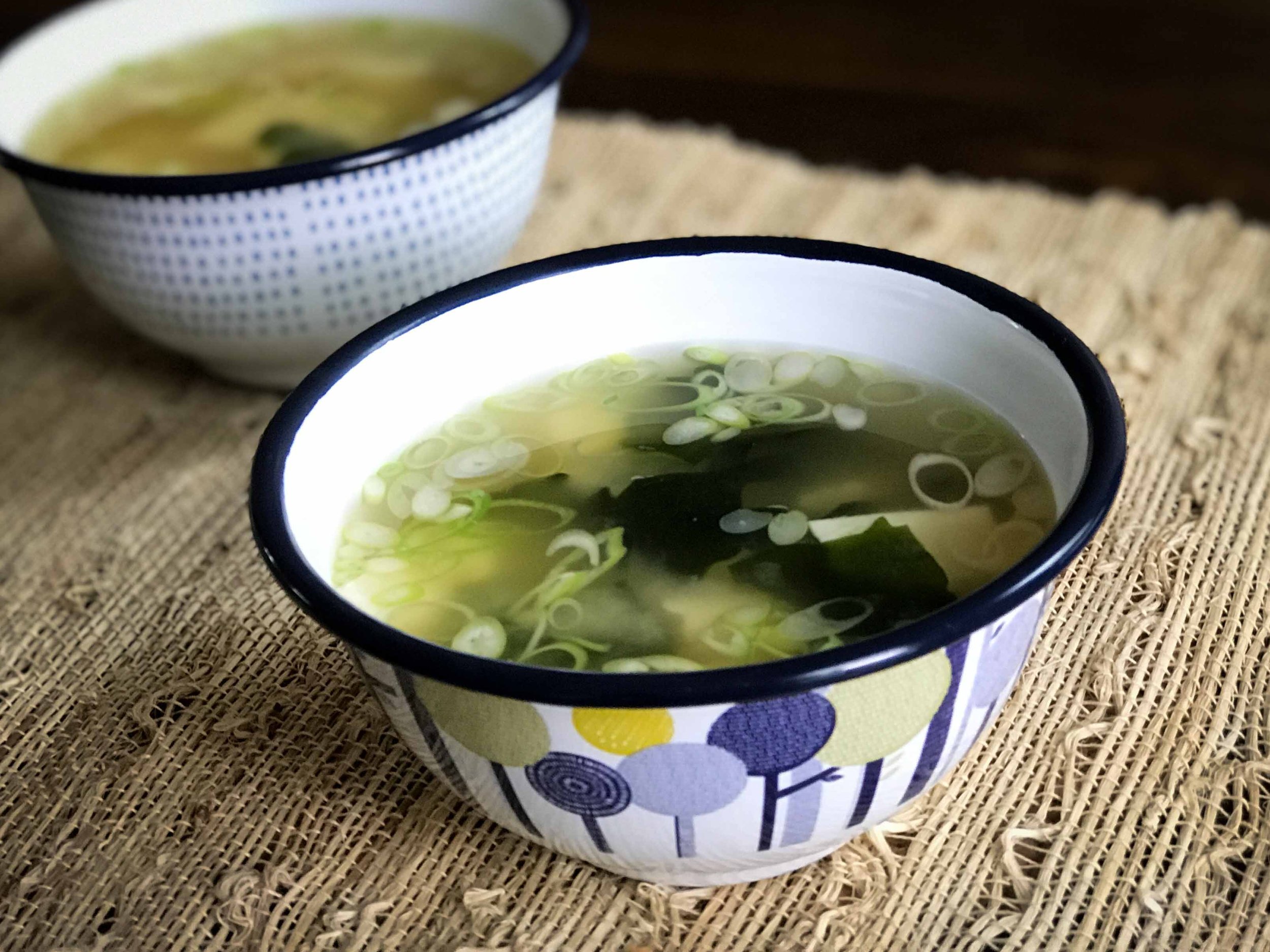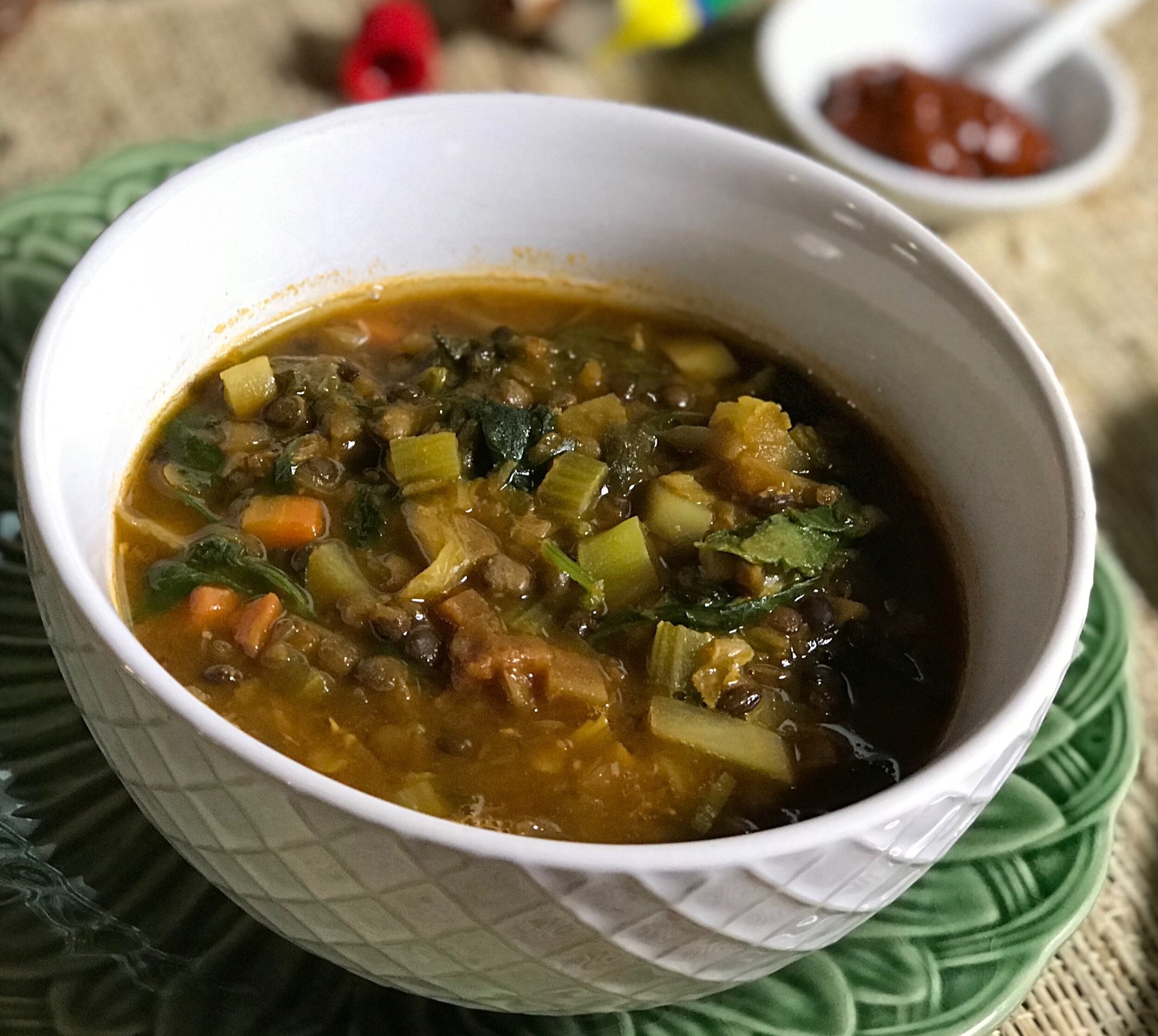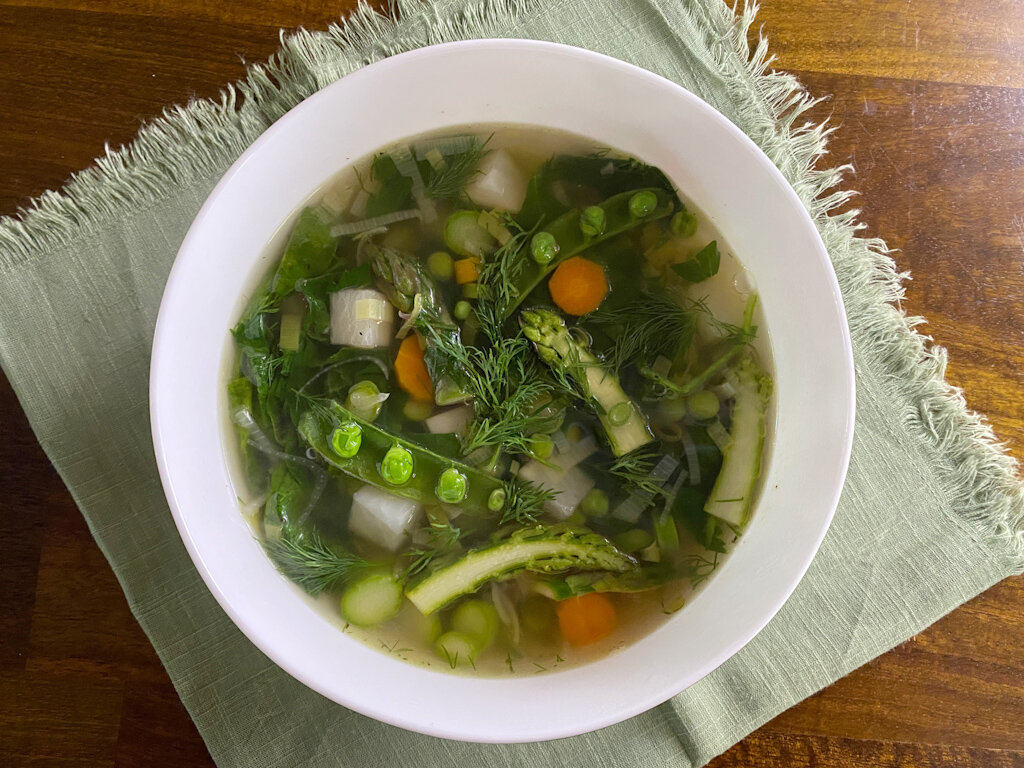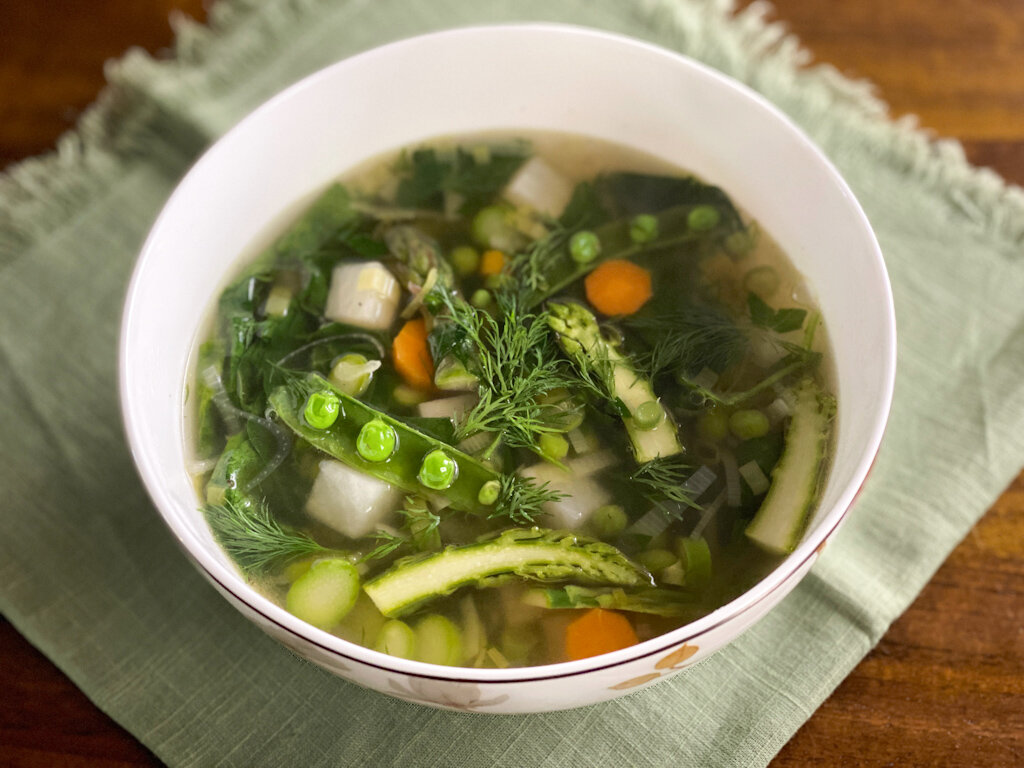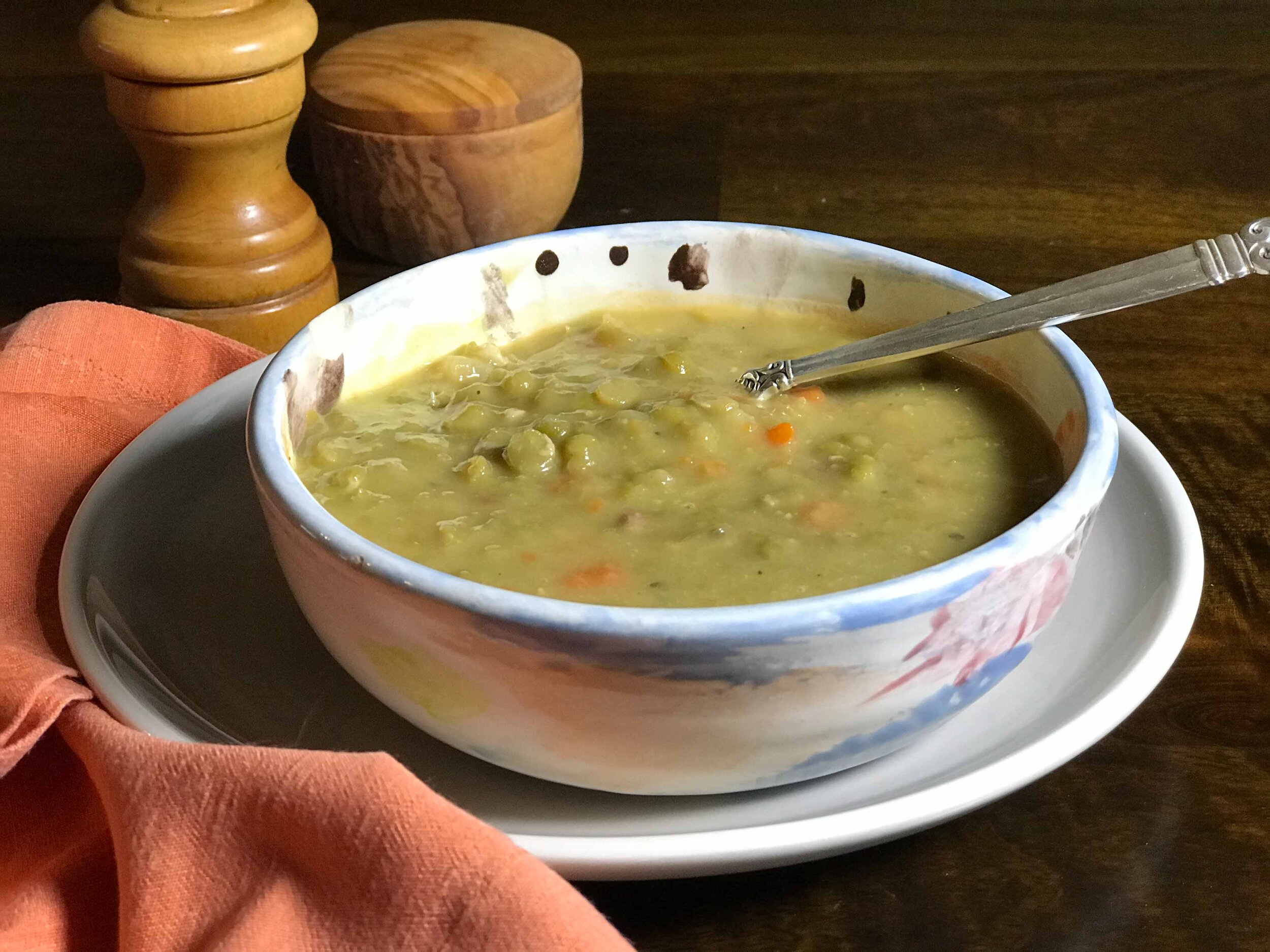By Leslie Brenner
When the going gets hot, cold soup is the answer.
My four favorite chilled soups — cacik, gazpacho sevillano, green gazpacho and cold beet borscht — are all wonderful in very different ways. In fact, they each have such distinct personality that you can keep them in rotation all season long and they’re always a thrill and a chill.
The first three can be made without even turning on the stove; the fourth — my mom’s borscht — requires simmering, but just half an hour’s worth.
Cacik: electricity not required
The traditional Turkish cold cucumber-and-yogurt soup known as cacik, which gets lovely herbal character from fresh mint and dill, requires no more elaborate equipment than a box grater and a whisk; I love how low-tech it makes me feel. Just grate some cukes, chop some herbs, whisk it all into yogurt with a little olive oil, vinegar, salt and pepper, and you’ve got cold comfort in a bowl. Not cold enough? Add a few ice cubes.
Garnishes for Gazpacho Sevillano
Gazpacho Sevillano: a cold soup with rich history
Probably the most famous cold soup in the world, Gazpacho Sevillano is the tomato-happy classic born in Spain and loved all over the world. You may be surprised to learn that the original gazpacho Sevillano was made with bread, garlic, salt, olive oil and vinegar — no tomatoes (or cucumbers or peppers); its creation pre-dated the arrival of tomatoes in Europe. That’s why cooks who want to respect the soup’s origin story always include bread.
In Spain, the ideal is the smoothest gazpacho possible, and cooks love to have fun with the garnishes. The riper and more flavorful the tomatoes you use, the better your gazpacho will be — which is why I only make this soup in the summertime.
The Greenest Gazpacho: Tangy, vegan, gluten-free and nutty-rich
To make Gazpacho Sevillano’s beautiful green cousin, just throw everything in the blender or food processor and whir it up. But the flavors and vibe couldn’t be more different: This one tastes deliciously green. Cucumber, green bell pepper, celery and parsley are the purée’s vegetable players. Garlic and sherry vinegar add pizzazz, and raw almonds or cashews add body and richness. Lots of assorted fresh herbs on top make it a show-stopper.
Joan’s Cold Beet Borscht: Ashkenazi favorite
This is the cold soup I grew up with; it was one of my mom’s specialties — passed down from generations in her family. It’s one of my favorite summer foods.
Truth is, though, it’s similar to the cold beet borscht enjoyed by the Eastern European Jewish diaspora around the world. It’s very simple: Grate beets, then boil them with a handful of their leaves, plus salt. Add lemon juice and sugar, then chill and garnish with sour cream, chopped radishes and cukes, and whole boiled potatoes (if you feel like it).
It’s insanely good — way better than its humble ingedients would suggest.


